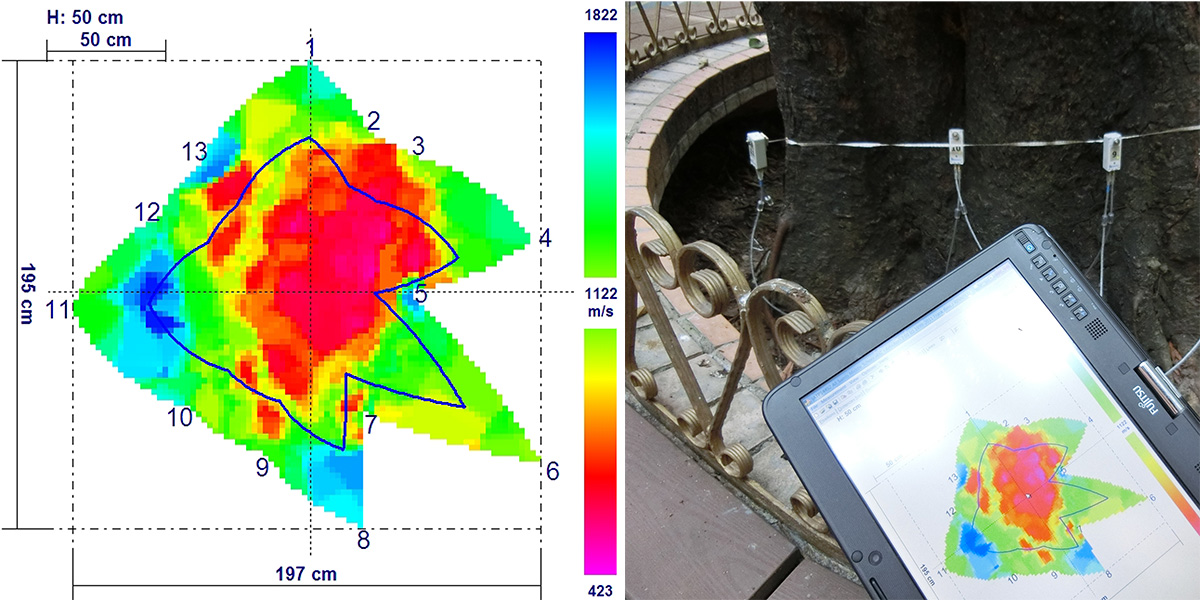Level 3 Tree Risk Assessment (Advanced)
Often applied for important trees such as:
Trees of Particular Importance (TPI)
Heritage Trees
Old and Valuable Trees
Stonewall Trees
Sometimes a Level 1 or Level 2 Tree Risk Assessment is insufficient to determine a tree’s structural stability. In this case ATP uses such instruments as the Resistograph® R650 and the Arbotom® Sonic Tomograph to help “see” inside the tree. The measurement results can help analyze and estimate the relative strength loss due to defects in the wood. The data collected from these devices is then further interpreted to determine, for example, how much pruning is needed to increase a tree’s relative safety level. Pruning can be simulated to determine the most suitable course of action.
When using these devices, it is crucial to choose the right location for measurement. This requires years of training and experience. ATP’s arborists are highly skilled in evaluating a tree’s structure to determine the location in the tree trunk or roots with the highest potential for failure.
Arbotom® Sonic Tomograph
The Arbotom is a novel impulse tomography unit that uses sound waves to analyse a tree’s interior. Problems such as hidden decay, invisible cavities and cracks can be easily detected with this device. Data is then interpreted to evaluate the relative strength loss of cross section and the direction of the highest potential for failure.
Resistograph® R650
The Resistograph is a drill resistance measuring device that drills a 1.5mm-wide and 50cm-long needle into a tree, which it then uses to generate data down to a resolution of .01mm. The resulting graph indicates the degrees of resistance in a tree based upon wood density. The device must always be operated – and its data interpreted – by a certified arborist.
Data Interpretation
The resulting data from measurements is then further interpreted by taking into consideration the tree’s age, size, and crown form. Special software then helps interpret the data to give an estimated overall relative safety level for further action. The resulting information helps ATP’s arborists decide the best course of action for tree hazard mitigation.

